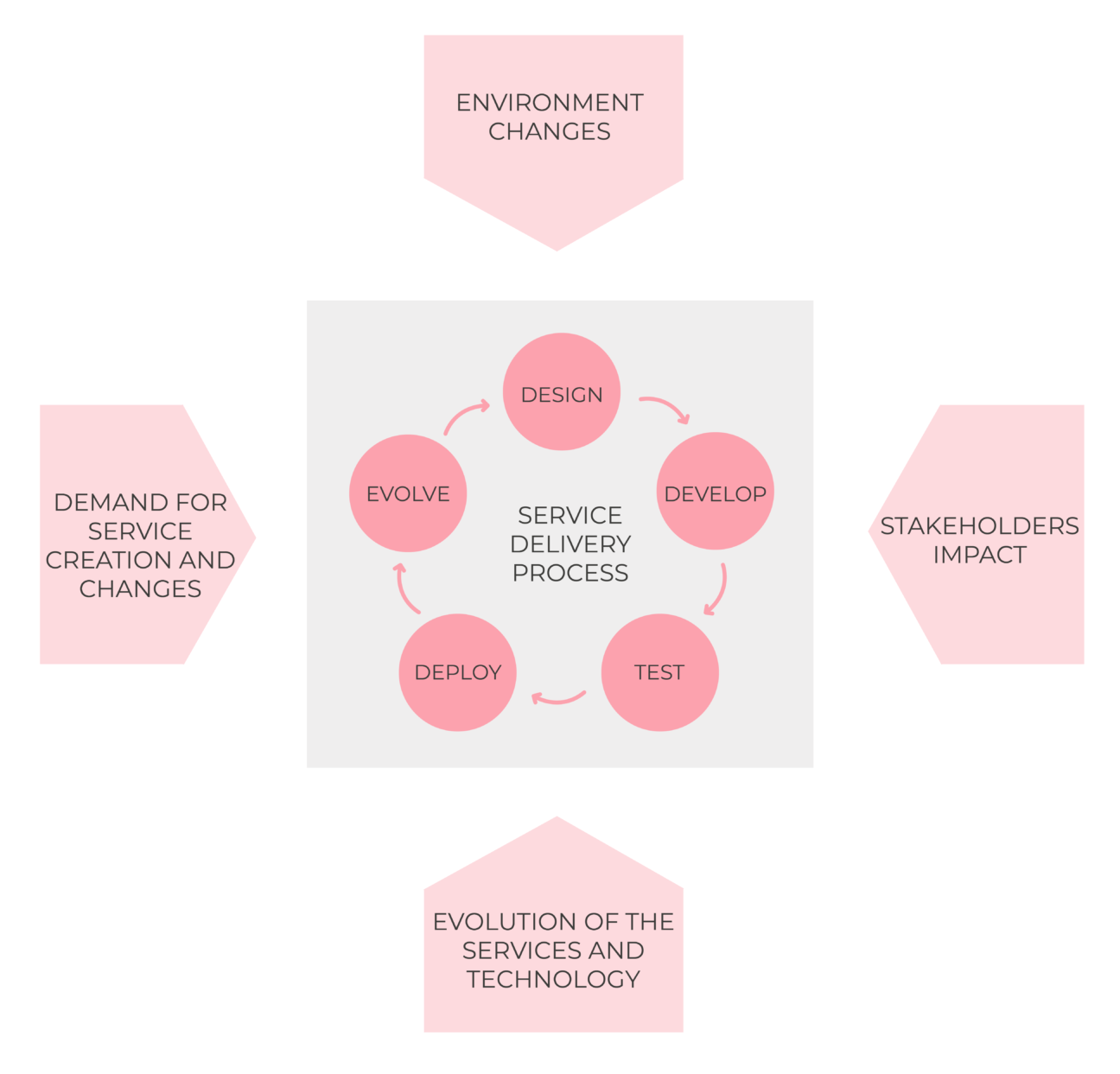In one of the previous posts – Integrations around us, we have explained what is integration in IT and shown some real-life examples of this type of IT project. Now we would like to discuss the challenges of managing these projects in one of the biggest ICT industries – Telecommunication.
The following topics will be covered in this blog post:
- Integration projects in telecommunication
- What are the challenges for the project managers of the telecom integration projects?
- What is the best approach for managing these projects?
Integration projects in telecommunication
One of the biggest industries that fall into the category of information and communications technology (ICT) is telecommunication. The telecommunication sector consists of a multitude big organisations which are making communication possible on a global scale, through the phone, Internet, airwaves, cables, wires, or wirelessly.
The possibilities of communication are various, meaning that each telecom company should have the infrastructure, both hardware, and software, that supports transmission of the data in words, voice, audio, or video, all over the world. The companies in this sector are usually telephone operators, Internet service providers, as well as satellite or cable companies.
All these companies have something in common – they all need to execute complex, massive projects, to fulfill everyday changing and expanding customer needs, and to follow the latest technological advancements to maintain a good position in the market and be competitive.
In the further text we will refer to projects in mobile network operator companies. The business of these organizations is based on two systems:
- The Operations Support System (OSS) – focused on the maintenance of network operations, which includes fault and performance management, customer activations, asset / network inventory / configuration management, order management, network security, and more.
- The Business Support System (BSS) – focused on the maintenance of the business around which the network is built, also including customer relationship management, creating offers for customers (products or services), collecting orders, and billing for telecommunications services.
OSS and BSS allow network operators to offer services to an enormous number of subscribers on global telecommunications networks. These are complex systems consisting of many applications and services from different vendors, which need to be adequately integrated. This means that most projects in this industry are projects that require a high level of integration between multiple host systems from different vendors and external service providers. Any change in the OSS or BSS system requires changes in the systems of multiple vendors.
What are the challenges for the project management of the Telecom integration projects?
Every integration project should start with a thorough business process modeling (BPM), so it is also valid for integration projects in telecommunications. In addition to capturing the current state of the system, it is necessary to show in detail the future desired state, with the interdependent processes of all applications within it. The next step is to create use cases that define how users will use the integrated software to achieve specific goals. During the development phase in this type of project, clients can change the requirements or add new functionalities to the scope, which can impact project planning and costs. Management has to make sure that information is available to all parties involved and that the project is transparent, so the communication runs smoothly, and the conflicts caused by doubts can be avoided.

An indispensable part of any integration project after implementation should be testing. Detailed testing of an integrated service and going through every possible good and bad scenario, enables the elimination of possible future problems. After the testing phase is done, the project can be released for use to end-users – going to production or project go-live. But that is not the end of the project – in case of any problems, it is necessary to provide support to the operational teams that will maintain the software in the production environment. Therefore, it is very important to do knowledge transfer and training with these teams.
For each project, it is important to identify internal and external factors that may have an impact on project implementation according to the original project plan and effort assessment.
The complexity of the service dictates the duration of the delivery process, and it usually lasts from one month to a year. During this period, many external factors cause several cycles of service adaptation/rework – new requirements, changes in the scope of the requirements, the influence of stakeholders, the evolution of services and technologies, the entrance of new competitors in the market, and more.
Competition among telecom companies forces changes, and in some cases, sudden turnarounds in strategies and project scopes, with the demand for quick actions and adaptation. Any possible change in the average telecommunication project will impact at least three systems.
Challenges for project management are often related to the lead time for the delivery of changes and testing. In addition, some of the challenges that companies face when managing projects in this area are the following:
- Unclearly defined scope of the project/requirements – when undertaking the obligation to perform the work, it is necessary to well define all goals, tasks, results, deadlines, and costs, to avoid misunderstandings in the further work process.
- Unrealistic delivery deadlines – when estimating delivery deadlines and committing to them, it is necessary to consider the possibility of the impact of various external and internal factors and potential risks.
- Insufficiently allocated resources – it is necessary to make a good resource plan, both human and financial, with the analysis of potential risks. When developing a human resources plan, it is necessary to perform a detailed analysis of the required profiles and seniority of staff, according to the complexity of the project.
- Interdependence with other projects – when assessing potential risks and impacts on the project, it is necessary to determine the relation of the project with other projects, but also interdependence and impact of all parties involved, suppliers and their applications.
- Integrations are not the primary focus of all project participants – it often happens that integrations are not the primary focus or area of expertise of most software vendors. Software vendors involved in these projects usually have knowledge of their own applications, but not of other systems that need to be integrated with theirs.
- Conflicts and poor communication between teams – it is possible that conflicts arise during the project due to stress, and it is necessary to adequately delegate responsibilities at the beginning, to enable open communication, both within the team and between different teams participating in the project.
What is the best approach for managing these projects?
The most commonly used agile frameworks and practices for software development projects are Scrum, Extreme programming, or Feature-Driven Development (FDD). All these frameworks are based on an iterative approach for software development, with the ability to create changes or provide the best possible response to them. Scrum framework is often used in the management of integration projects in telecommunications since it enables a quick response to the changing needs of the market. Scrum is an agile framework characterized by time-limited iterations called Sprints, with a focus on a clearly defined goal. When a sprint starts, it is not possible to add new tasks unless defined Scrum rules are followed. In addition to the above, the Scrum rules related to roles, ceremonies, and artifacts must be respected and followed by the book, otherwise, it is considered that the organization will not enjoy all the benefits of applying this framework.

Integration projects in telecommunications have a much shorter implementation time compared to other software implementation projects. The choice of project management approach is the most important step and prerequisite for a good start, and later project implementation. For the realisation of the defined scope of the project in the planned timeline and with a high level of quality, the organisation and work method of the team is of crucial importance.
It is often the case that in integration projects in telecommunications, due to the complexity of the systems and the large number of suppliers, it is not possible to apply only one project management methodology. As a result, organisations are increasingly trying to adapt agile methods to their business and develop new frameworks to help them manage this type of project.
One of the frameworks that can be applied to this type of project is Scrumban, a hybrid framework created by combining the advantages of two popular agile frameworks – Scrum and Kanban. Scrumban uses the structure of Scrum – an iterative approach to software development, the existence of a task list – backlog, Scrum ceremonies (daily meetings, planning meetings and retrospectives as needed), and elements of Kanban – visualisation of continuous workflow, limiting the amount of “work in progress” and measuring and improving the workflow.
The use of Scrumban as a framework for the management of integration projects in telecommunications has the following advantages:
- Simplicity and ease of adoption – Scrumban is a very flexible framework, it does not require significant changes in team work (such as changes in team roles or implementation of other Scrum rules), which makes it easier to adopt.
- Suitable framework for managing large projects – large projects can be divided into 1 year, 6 months or 3 months buckets, where constant prioritisation of work/tasks is performed throughout short iterations (1-2 weeks).
- Better work organization and team collaboration – Prioritising tasks and limiting the amount of work in progress allows for greater team commitment, better organisation, and collaboration among team members.
- Time savings, faster delivery process and response to changes – planning and task prioritisation is done on demand, when the number of tasks to be done falls below a predefined threshold. This allows time savings, faster adaptation to changes and faster delivery.
- Transparency of work and timely detection of problems in work processes – visualisation of work processes with the Scrumban board which shows task statuses, enables transparency of work, so it is possible to determine where current problems are and what blocks the entire delivery process.
- Reduced level of stress in the team – during each iteration in Scrumban, team members on their own initiative choose the tasks they want to work on, taking into consideration the priority of the tasks. All team members are equal and have insight into the complete project, which leads to a reduction of stress levels in the team.
Conclusion
Managing telecommunications integration projects is a big challenge for company management, due to the nature of this industry and a number of factors that can affect delivery efficiency. The importance of integration in the field of telecommunications should not be underestimated, because the changes in the systems they connect very often require a significant amount of work.
Scrumban is one of the agile frameworks for project management whose application in this industry can bring a number of benefits to organisations. It can be used for maintaining projects on current systems, in situations when it is not possible to apply Scrum, or when a high degree of flexibility in team work is required.
Based on our experience, due to the very dynamic environment and frequent high priority requests from the client side, the use of Scrum has not proven to be the most effective solution. Therefore, we decided to achieve the necessary flexibility by using the characteristics of the Kanban, and the structure and predictability by using Scrum. By combining these frameworks, we came to the approach that best suits our business and allows us to maintain customer and team satisfaction at a high level. With sprint-like iterations which are not closed for subsequent addition of tasks, we can quickly and easily reprioritize tasks according to customer requirements, while keeping the amount of work performed by the team at the optimal level.
